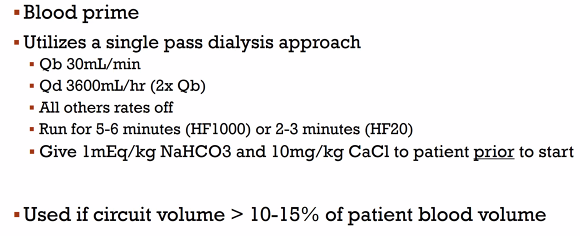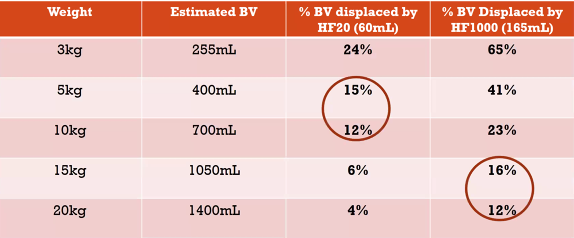On this page
Continuous kidney replacement therapy (CKRT): overview
AKA: continuous renal replacement therapy (CRRT)
A general overview of the principles of continuous kidney replacement therapy in pediatric patients
stub
This article is incomplete. More content is on the way. Want to contribute? Every bit helps! Submit your notes, favorite review article, slide deck, case report, links to educational resources, SmartPhrases, images, or anything else you find helpful! It takes less than a minute to get in touch:
Basics
-
Uses an extracorporeal circuit similar to that used for
. - Runs continuously for the duration of the circuit life, which is usually several days
-
Particles can be removed by diffusion (same as
), convection, or a combination of the two - Fluid is removed by
with hydrostatic pressure across the dialyzer membrane - The total clearance can be approximated by the total effluent rate (QE), the rate at which fluid is drained into the effluent bag
- Continuous clearance, particularly convective clearance, results in significant solute loss over time
- Electrolytes must be monitored closely and often replaced
CKRT typically performed in
- Critically ill children
- With oliguric AKI
- That have failed medical management
Indications for CKRT rather than HD or PD
- Hemodynamic instability (accurate, predictable
over time) - Large volume needs (e.g., nutritional support, FFP, high volume meds)
- Need for convective (vs. diffusive) clearance
- Certain toxins/overdose agents may be more effectively removed via convective clearance
Clearance
- Diffusive clearance
- Molecules move down a concentration gradient
- Generally speaking, diffusive clearance works better for small molecules and convective clearance works better for middle molecules
Types of continuous kidney replacement therapy
SCUF: slow continuous ultrafiltration
Removal of fluid without replacing any fluid
CVVH: continuous veno-venous hemofiltration
- Combined convective and diffusive clearance
- Use of replacement fluids as well as countercurrent flow
Prime
Prime replaces the blood that is brought into
- Normal saline
- Default choice
- 5% albumin
- Somewhat hemodynamically unstable patients
- Lots of aluminum in albumin products
- Blood prime
- Uses a single pass dialysis approach
- Qb 30 mL/min
- Qd 3600 mL/h (2x Qb)
- All other rates off
- Run for 5-6 minutes if using HF1000 or 2-3 minutes if using HF20 filter set
- Give 1 mEq/kg NaHCO3 and 10 mg/kg CaCl to patient prior to start
- Uses a single pass dialysis approach
- Circuit to circuit change
- Probably the least likely to cause hypotension
- Used for unstable patients or if trying to avoid another blood prime
- Suboptimal if line is sluggish
- Not possible if the circuit has clotted or stopped
- Returning the prime at the end of circuit life
- If blood prime is used, do not return the blood to the patient
- The blood in the circuit is the same
- If blood prime is used, do not return the blood to the patient




